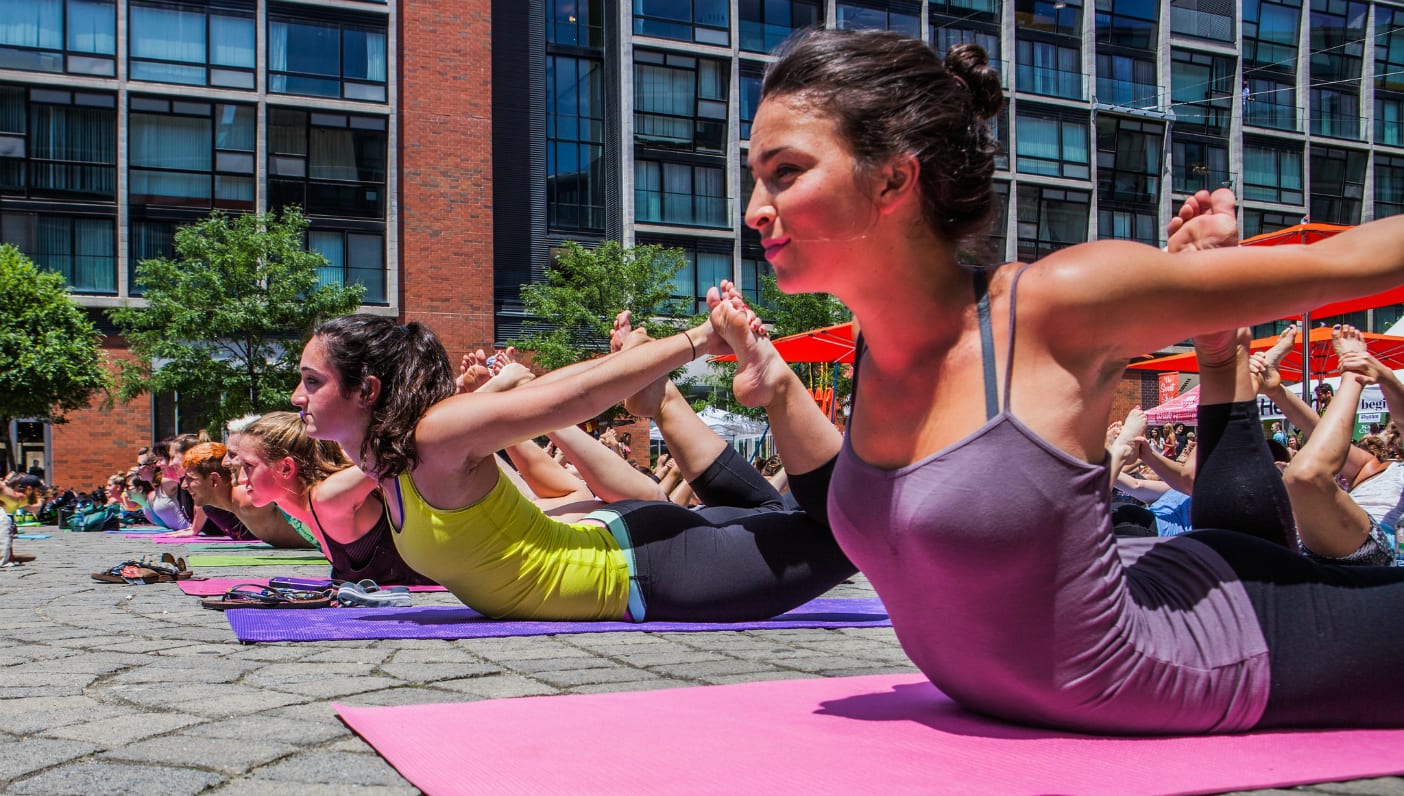
Nichol Chase is a Hatha Yoga teacher and dancer with a degree in Opera. Join Nichol at Wanderlust Hollywood on July 30th for her backbending workshop and learn how to move precisely and carefully into advanced postures and explorations. All are welcome to attend, bend, and open! For tickets, please click here.
Our bodies communicate to the world what is going on for us internally, sometimes without our being aware that it is happening. Have you ever noticed the position of your shoulders, and where your gaze tends to fall when you’re feeling sad or depressed? There is a natural tendency to round the back, as if we are trying to subconsciously curl into ourselves, protecting the front side of the body from anymore pain and suffering. When we are feeling emotionally low, our posture changes shape and supports a lower level of energy and lends to the continuation of that emotional state.
On the flip side, we can use our physical body to change our emotional and mental bodies in order to arrive at a place that better serves our highest experience. We can use yoga asana to energize, excite, and feel ready to take on the world. By consciously altering our physiology through our physical body, we can change our emotional state.
Back bending asanas are one of the most effective means of shifting perspective and mood. We use our body to open us while tapping into our own strength and support that we find from the posterior body.
The Meaning of Bending
Some schools of thought believe that bending the body relates to the way in which we connect with our past and our future. According to New York-based studio Katonah Yoga, back bending asks us to use the support of where we’ve been and the experiences we’ve had—which live in the posterior—to cultivate the potential for the present moment, a potential that exists in the front plane of our body. All we’ve done so far in our lives supports the opening and possibility of our future. When we backbend, we are simply aligning this truth.
When we are feeling closed off to the world, wanting to change the state of our lives and what is going on personally, back bending serves as an antidote to bring us into alignment with our highest self. On a physiological level, back bending stimulates the thyroid and pituitary glands, which are responsible for hormonal health. Taking five breaths in camel pose or a full wheel can be the difference between a day that is steeped in anxiety and depression and one that is moved through with an open heart and trust in all that is in store.
The Physicality of Bending
On a physical level, backhanding serves as an antidote to our tech-dependent lifestyles. Nichol Chase, senior teacher at YOGAMAZÉ, spoke about the benefit of incorporating backbends into a regular yoga routine. “Back bends are a great counterbalance for the posture we assume for almost every activity on a daily basis. We live most of our lives in a slumped forward bend and need to open up in the other direction. When done skillfully and consistently, back bends help you release areas in your body that feel intractable.”
Despite their benefits, backbends are one of the more feared family of poses. On a physical level, move the spine in a direction it is not normally traveling brings on a feeling of being in danger. Though the back body is fully able to support the weight of the front body when put into proper alignment, the threat of injury often compels students to resist going to their edge. On a primal, evolutionary level, the act of exposing the heart, stomach, groins, and tender areas of the body is counterintuitive to protecting ourselves from potential predators.
Emotionally, backhanding also asks vulnerability from the practitioner. As Nichol notes, “Back bends can be scary physically and emotionally. They are incredibly potent and can bring up a lot sensations you are not used to feeling in your body as well as trigger an emotional experience.”
Once we understand that backbends are fear-inducing by nature yet powerful in effect, we can approach them with curiosity and trust rather than foreboding.“The good news,” says Nichol, “is when you have someone who can teach you the mechanics of a healthy backbend and can help you build your backbend practice progressively. They then become much less daunting and even enjoyable.”
The next time you are feeling down, anxious, or stuck in an emotional state that is not serving your highest level of contentment, try taking 5–10 breaths in a camel or full wheel pose. Give your body a chance to direct your mental and emotional bodies into a place that is more open, calm, trusting, and ready for whatever is to come.
—
 Erin Ward is a freelance writer, yoga teacher, and navigator at Wanderlust Hollywood.
Erin Ward is a freelance writer, yoga teacher, and navigator at Wanderlust Hollywood.